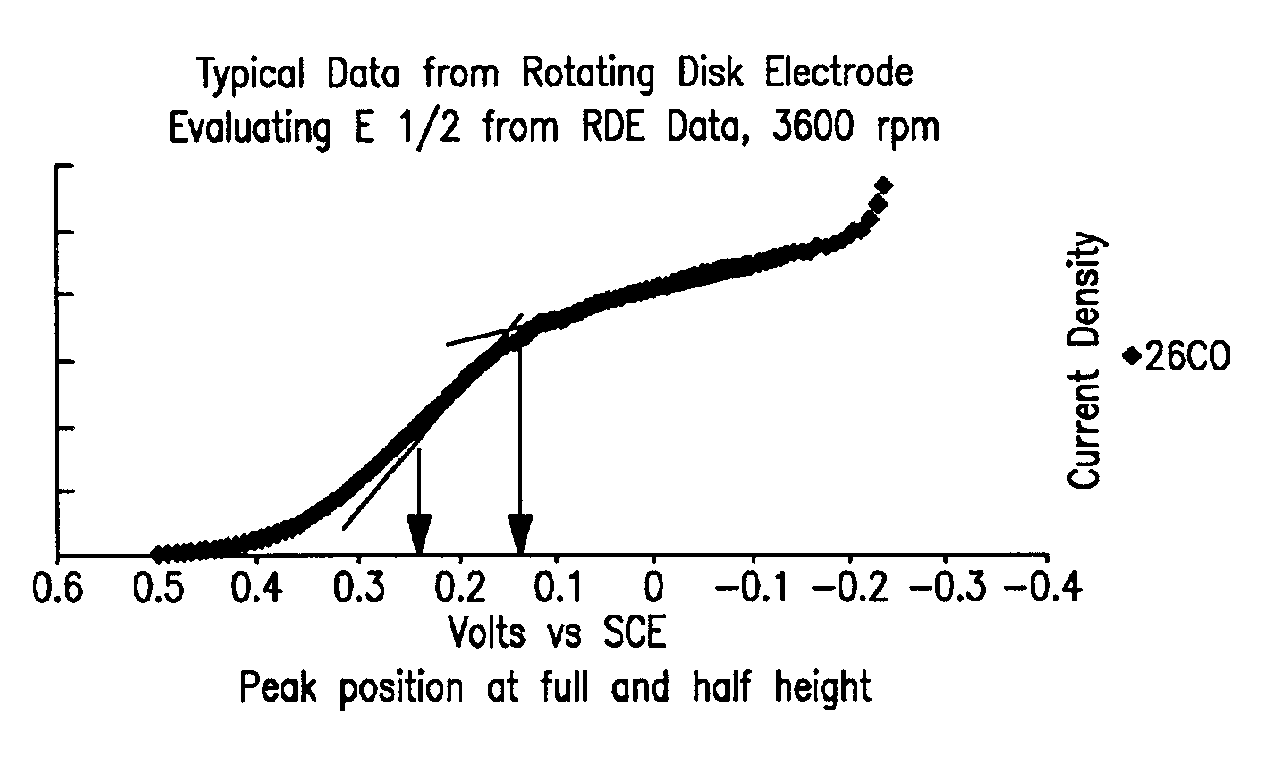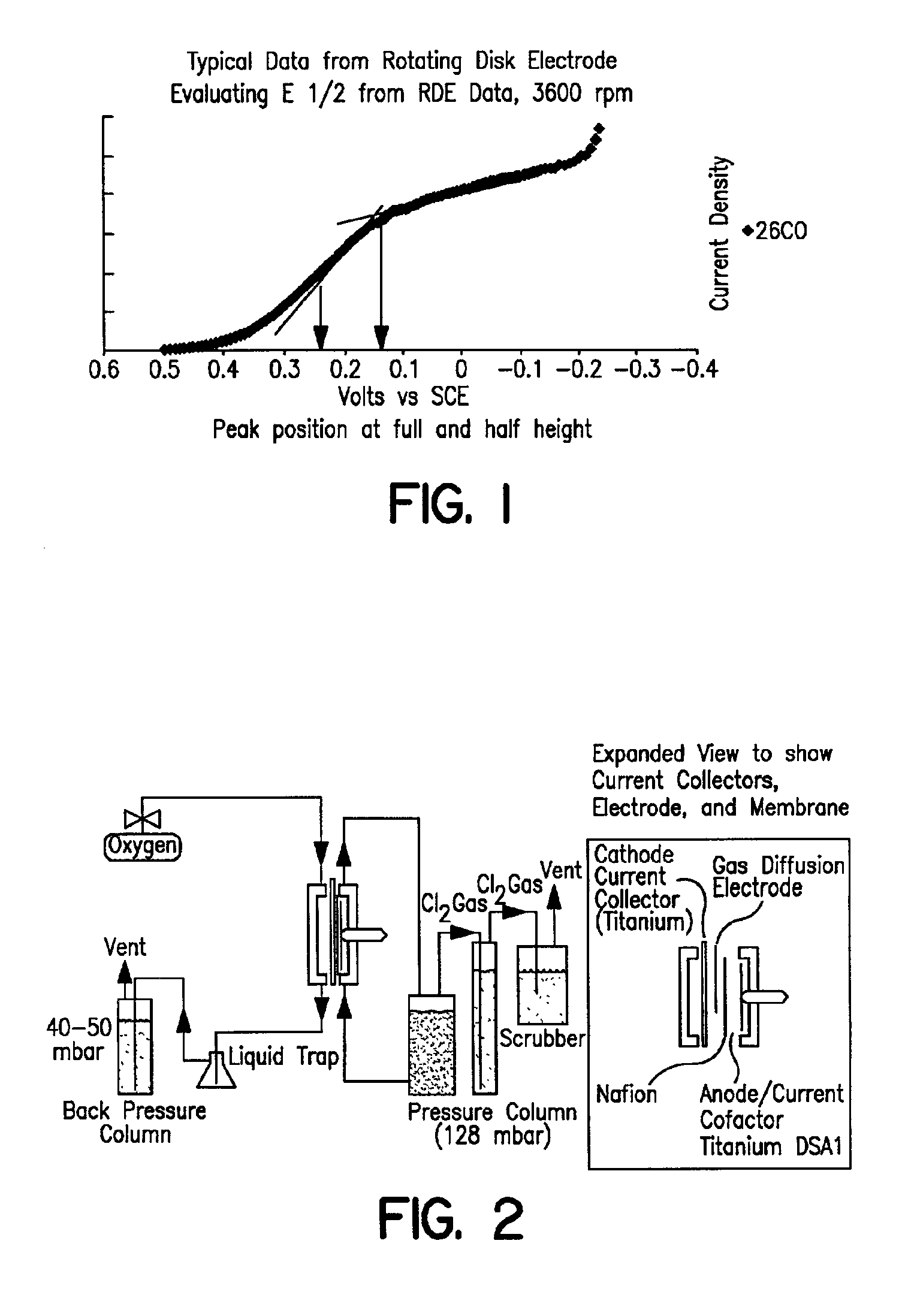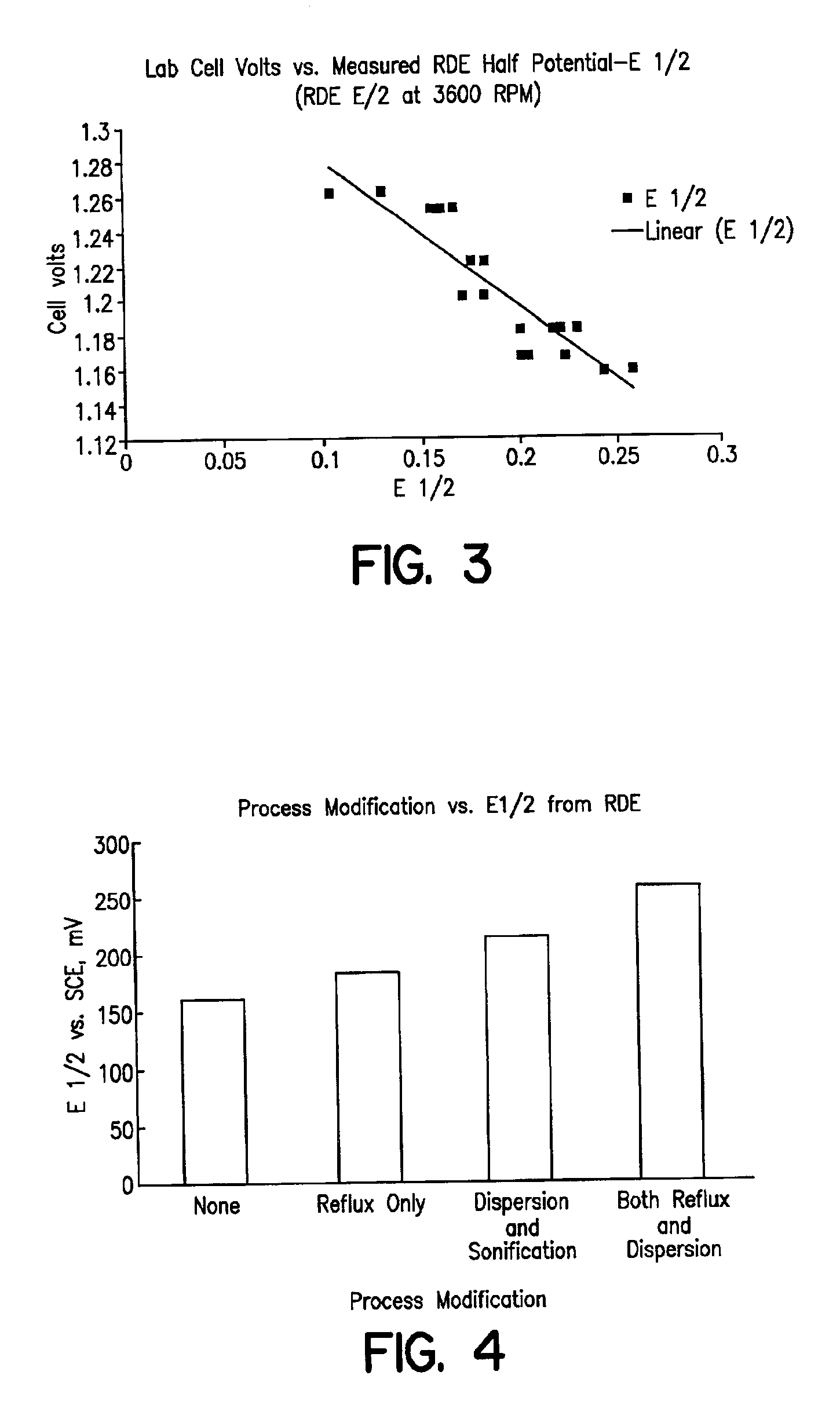Rhodium electrocatalyst and method of preparation
a technology of electrocatalyst and rhodium sulfide, which is applied in the direction of catalyst activation/preparation, metal/metal-oxide/metal-hydroxide catalyst, etc., can solve the negative influence of oxygen reduction activity, material inappropriate for gas diffusion electrode use, and catalyst dissolution. a significant amount, to achieve the effect of improving performan
- Summary
- Abstract
- Description
- Claims
- Application Information
AI Technical Summary
Benefits of technology
Problems solved by technology
Method used
Image
Examples
example 1
COUNTER EXAMPLE 1
One hundred grams of supported rhodium sulfide were prepared by the following procedure: 57.3 grams of RhCl3.xH2O (39.88% given as rhodium metal) were dissolved in 2 liters of de-ionised (D.I.) water, without any pH adjustment. 53.4 grams of Vulcan XC-72 active carbon were added, and the mixture was slurried with a magnetic stirrer.
Hydrogen sulfide gas was then sparged through the slurry at ambient temperature using nitrogen as a carrier gas. The mixture has been allowed to react as described for 7 hours. Upon completion of the reaction, nitrogen was purged through the system to remove residual H2S. The remaining solution was vacuum filtered to isolate the solids, which were then washed with de-ionised water and dried at 125° C. to a constant weight.
The resulting catalyst cake was finally ground to a fine powder and subjected to 650° C. under flowing argon for two hours. A load of catalyst on carbon of 27-28%, given as rhodium metal, was obtained.
example 2
The catalysts of all the above reported examples, along with commercially available platinum on Vulcan XC-72 (for example from E-TEK, Inc.), can be utilised in several different configurations such as listed below. The catalyst of this invention is not limited by the structure of the gas diffusion electrode.
a). ELAT: A web of carbon cloth with a warp-to-fill ratio of unity and about 25 to 50 yarns per inch, and a 97-99% of carbon content was selected from a commercially available product with a thickness of 10 to 15 mils. Carbon cloth with a thickness of 5 to 50 mils could have advantageously been used for this purpose. A mixture of fluorinated polymer (polytetrafluoroethylene, P.T.F.E. commercialised by DuPont under the trademark Teflon®) and Shawinigan Acetylene Black (SAB) carbon, commercialized by Cabot Corp., was coated on each side of the carbon cloth, air drying at room temperature after each coat, until reaching a total loading of 8 to 10 mg / cm2. A mixture of the powdered ca...
example 3
In order to demonstrate the consistency of the catalyst prepared according to Example 1 and compare multiple batches of catalyst prepared using the improved method to the method of Counterexample 1, the rotating disk electrode (RDE) was employed to obtain electrochemical data independently of laboratory cell testing. A dilute ink of rhodium sulfide on carbon is prepared with by mixing 33 mg of supported catalyst with 25 mL iso-propyl alcohol and 25 mL Dl water. A total of 1 microliter of this ink is applied in two to three coats onto the tip of a glassy carbon rotating electrode (6 mm dia). Once the ink is dried, an additional layer of 5% Nafion® ionomer solution is applied (10 microliters) and evaporated to dryness. The electrode is placed in a solution of 5% HCl that is at room temperature. A platinum counter electrode and saturated calomel reference electrode (SCE) is connected to a PAR 373 Potentiostat along with the rotating disk electrode. Under various rotation rates, a poten...
PUM
| Property | Measurement | Unit |
|---|---|---|
| temperature | aaaaa | aaaaa |
| temperature | aaaaa | aaaaa |
| concentration | aaaaa | aaaaa |
Abstract
Description
Claims
Application Information
 Login to View More
Login to View More - R&D
- Intellectual Property
- Life Sciences
- Materials
- Tech Scout
- Unparalleled Data Quality
- Higher Quality Content
- 60% Fewer Hallucinations
Browse by: Latest US Patents, China's latest patents, Technical Efficacy Thesaurus, Application Domain, Technology Topic, Popular Technical Reports.
© 2025 PatSnap. All rights reserved.Legal|Privacy policy|Modern Slavery Act Transparency Statement|Sitemap|About US| Contact US: help@patsnap.com



